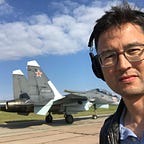Mothers of the Disappeared
Svetlana Isayeva discovered she was not alone when her son went missing without a trace.
Two posters hang on the wall of Svetlana Isayeva’s office in Makhachkala: one of Natalya Estemirova, the other of Anna Politkovskaya. The two women are dangerous role models to have. Both were murdered while exposing human rights violations in neighboring Chechnya, and their killers are still at large.
Isayeva, an accountant by profession, helped found Mothers of Dagestan for Human Rights after her son vanished without a trace in 2007. A provincial government minister told Isayeva that her son must have “gone to the woods,” in other words, joined the armed Islamist underground. Yet she is certain he had no reason to do so.
As she trekked from one government office to the next seeking information on her son, Isayeva discovered that she was not alone. Twenty-two young men disappeared in Dagestan that year. Their mothers organized appeals, protests — and finally their own human rights group.
Their goal is to end kidnappings, torture, and extrajudicial executions by law enforcement agencies. In Russia’s homegrown war on terror, no means are harsh enough to stamp out extremism. The innocent bystanders who come to harm — often in an effort by police to pad official statistics or avenge terrorist attacks — fuel a vicious circle of violence.
Photo: mvd.ru
“At the time, I thought we could do a lot,” says Isayeva. “Now I understand that, yes, we can alert the press and the authorities. But there’s only a small percentage of success.”
The Mothers of Dagestan have been the target of arsonists and the authors of a kill list. Yet from her small office next to a grocery story at the end of a residential street in Dagestan’s capital, Isayeva continues documenting abuse and injustice.
The Mothers of Dagestan have been the target of arsonists and the authors of a kill list.
She makes no secret of her secular outlook. Isayeva laments that young women now wear black hijabs; in the past, she says, black was only a sign of mourning.
The lawlessness of the police is driving young people into the arms of Islamists, she says. Nobody who’s suffered at the hands of the authorities has any hope of legal recourse. “Going to the woods” to take justice into one’s own hands often seems like the next best option.
Photo: Lucian Kim
Isayeva grants that there are people in the provincial government who genuinely want peace. Yet she suspects that “big money” skews the picture. Law enforcement agencies receive generous funding from Moscow, and officers engaged in ubiquitous “special operations” against accused terrorists earn hefty bonuses.
Isayeva recalls one tragic case in Makhachkala in 2008. A local Russian boy, 17, was so determined to marry an ethnic Avar girl that he converted to Islam and planned to elope with her. The girl’s family — relatives of a provincial deputy interior minister — was opposed to the union and organized a police operation against the boy, who was killed together with a friend. Photos distributed afterwards showed weapons and Islamist literature next to his body.
Photo: mvd.ru
Patimat, Isayeva’s young assistant, fears that Dagestan’s violence could spiral into a full-scale civil war. Even if the legal system suddenly started working and corruption disappeared overnight, she says, there still would be a conflict among radical Salafites, moderate Sufis, and the unreligious people caught in between.
“If war starts, it will ignite the entire Caucasus,” Isayeva says.
The top local news on the day I visit Isayeva is that police killed an Islamist fighter with the nom de guerre Emir Khasan and three accomplices in central Dagestan.
“If war starts, it will ignite the entire Caucasus.”
“Ok, somebody was killed. But do they have relatives?” Isayeva’s husband Gasan says acidly. “If they killed my brother and walked free, what would I do? This is the Caucasus.”
Just as I’m getting ready to leave, a gaunt, middle-aged woman in a black headscarf enters Isayeva’s office.
“You are in black. What happened?” Isayeva asks, concern and dread in her voice.
The woman, from northern Dagestan, wears a stony expression. She’s come to the capital to appeal directly to the province’s president about the death of her 15-year-old son. The authorities insist he hanged himself; she is certain he was bullied, blackmailed and finally murdered by two of his classmates, the sons of local officials.
“Here’s a future suicide bomber. If she doesn’t get anywhere, she’ll blow herself up in front of a government building.”
The mourning mother has written out her account in dense handwriting on three sheets of paper and wants help putting it in a more presentable form. She bursts into tears as she begins reading aloud. I notice that Isayeva has taken off her glasses and is crying too. Her husband stares out the window.
Isayeva promises help. She’ll mobilize local media and assist in lodging a formal complaint with prosecutors.
Gasan turns to me and mutters under his breath so the woman can’t hear: “Here’s a future suicide bomber. If she doesn’t get anywhere, she’ll blow herself up in front of a government building.”
